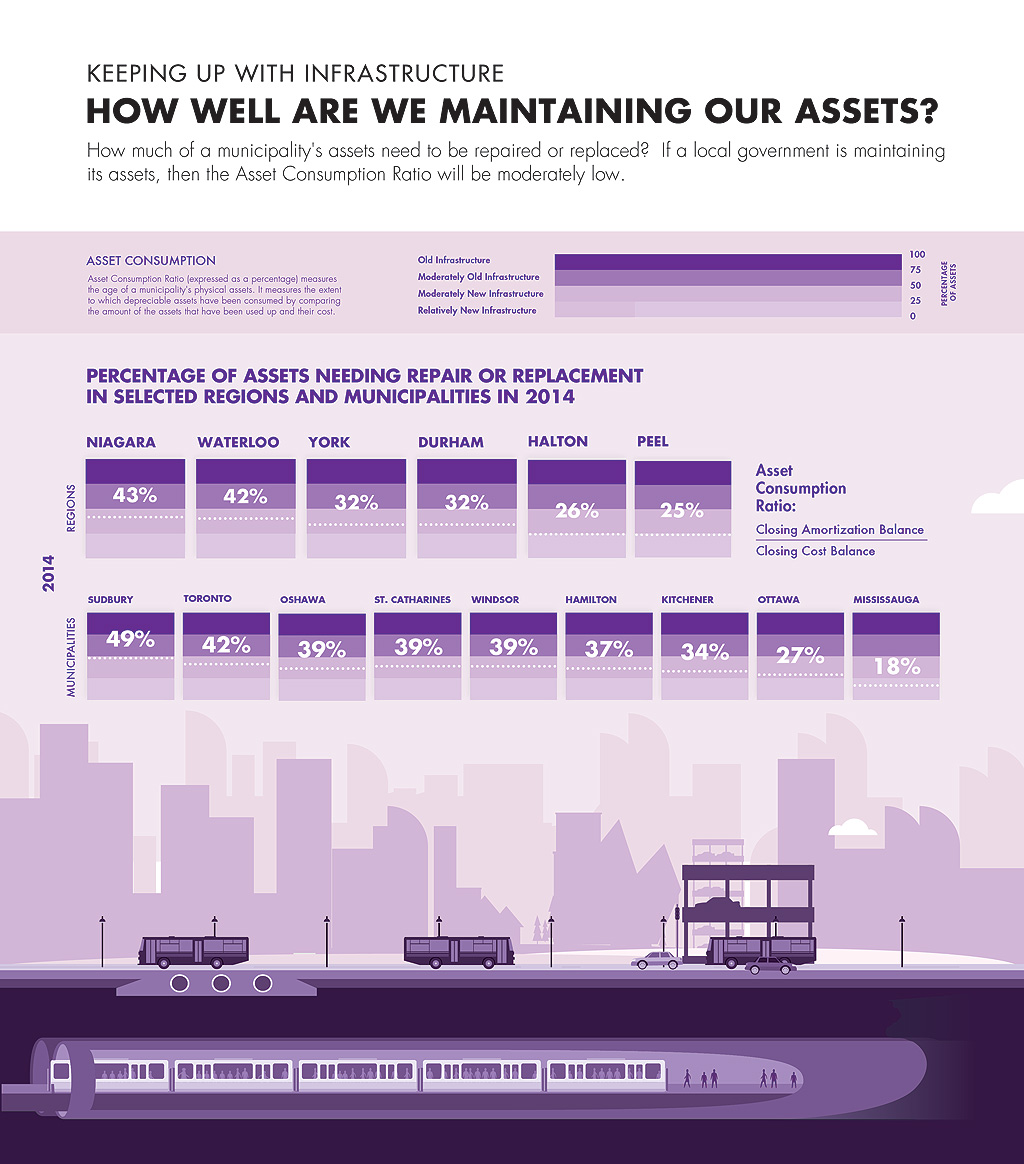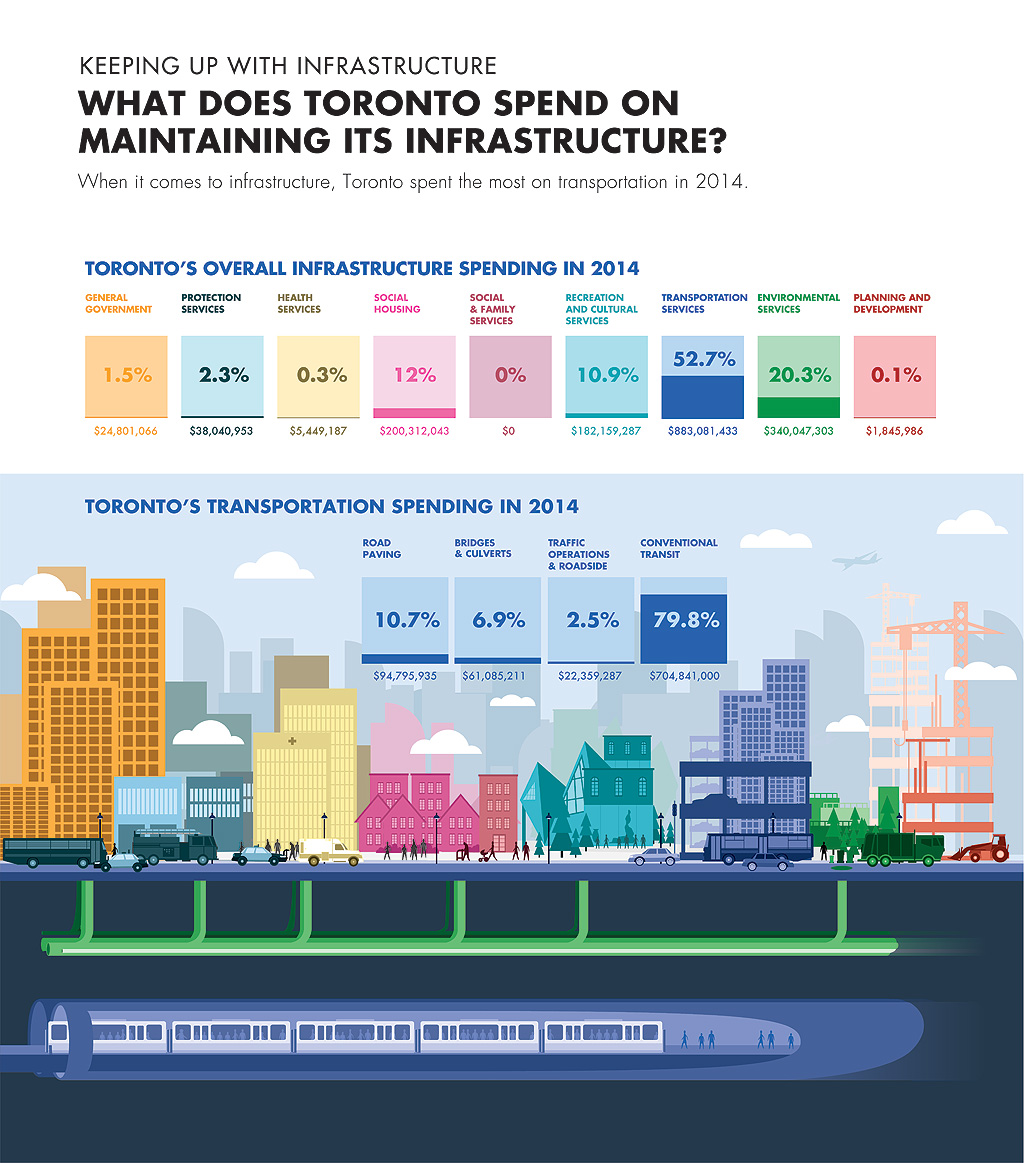The State of Ontario's Infrastructure
There are many ways to measure the fiscal health of Ontario’s cities. A municipality that balances its budget, has modest tax increases every year, and has little to no debt, may appear to be fiscally healthy. But the state of its infrastructure could tell a different story. For example, while the fiscal health of the City of Toronto is sound by most measures, its aging infrastructure and investment needs present a significant financial challenge for the future.
Municipalities across Ontario are facing similar challenges, but some have done more than others to preserve the value of their capital assets. One way to measure the state of a municipality’s infrastructure is to look at how much of a municipality’s depreciable assets have been used up (and therefore are in need of repair or replacement), compared to the original cost of those assets. That comparison is known as the asset consumption ratio. If a government has been maintaining its assets, its asset consumption ratio will be relatively low.
The first visualization provides a snapshot of how select municipalities are doing, relative to each other, when it comes to maintaining and renewing their assets, and the second breaks down infrastructure spending in the City of Toronto to provide a clearer picture of where those dollars are going.


Learn More
Cost Overruns on Infrastructure Projects: Patterns, Causes, and Cures
by Matti Siemiatycki, 2016
Can Tax Increment Financing Support Transportation Infrastructure Investment?
by Murtaza Haider and Liam Donaldson, 2016
Is Your City Healthy? Measuring Urban Fiscal Health
Edited by Richard M. Bird and Enid Slack, 2015
